Saucepans are one of the most versatile tools in the kitchen, making everything frying dishes, warming leftover food, or cooking vegetables or stews extra easy. So it’s no surprise that they’re one of the most sought-after kitchen utensils out there.
To help sellers choose the right saucepan for a range of consumers, we’ll provide an overview of the market as well as the different varieties available.
Table of Contents
What sets saucepans apart from other pans?
What to consider before buying saucepans
Conclusion
What sets saucepans apart from other pans?
In short, saucepans’ depth make them perfect for heating or cooking liquids. But they’re also perfect for frying, making them one of the most versatile kitchen tools out there.
What to consider before buying saucepans
Materials
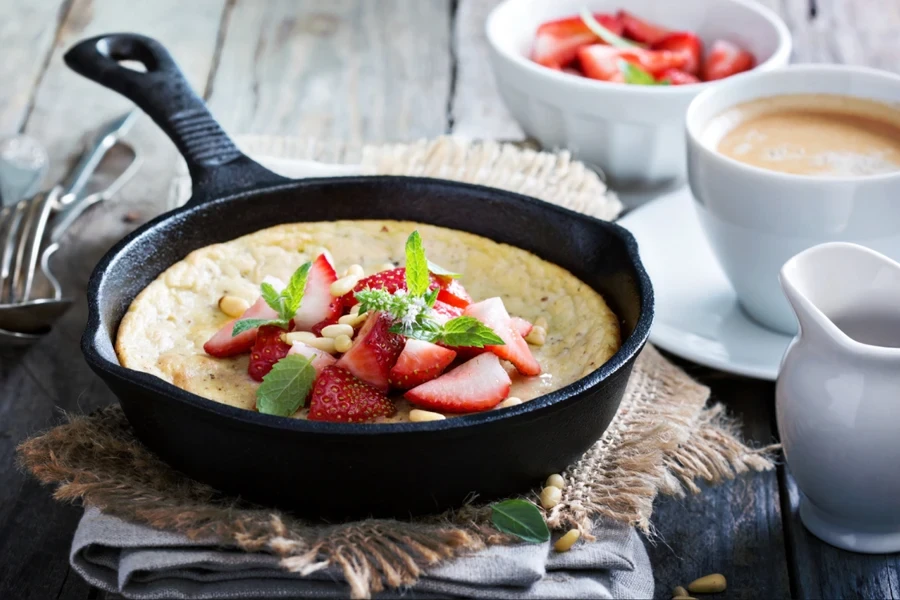
Like most products, saucepans are made from a variety of materials. However, each material offers different benefits. Here is a closer look at the common materials used to make saucepans today.
Stainless steel
No saucepan material is more popular than stainless steel. Stainless steel saucepans are known for their even heat distribution and dishwasher-safe designs – it’s no surprise then that most consumers love them. Beyond functionality, stainless steel gives saucepans a visually appealing look, making them a focal point in kitchens.
Copper
Copper may not be as popular as stainless steel, but these saucepans are also valued for giving consumers full control over the cooking process, providing even heat distribution that ensures all foods cook properly.
Even better, copper pans are one of the toughest, most durable, and metal-utensil-safe options, with some lined with stainless steel so that they don’t react to various foods.
Cast iron
Cast iron is another great saucepan material,, whose bulkier material means that foods heat slowly but evenly, giving flavors time to develop, and retaining heat.
Cast iron saucepans can also withstand high temperatures, meaning consumers can use them in ovens safely. However, they do require hand washing.
Aluminum
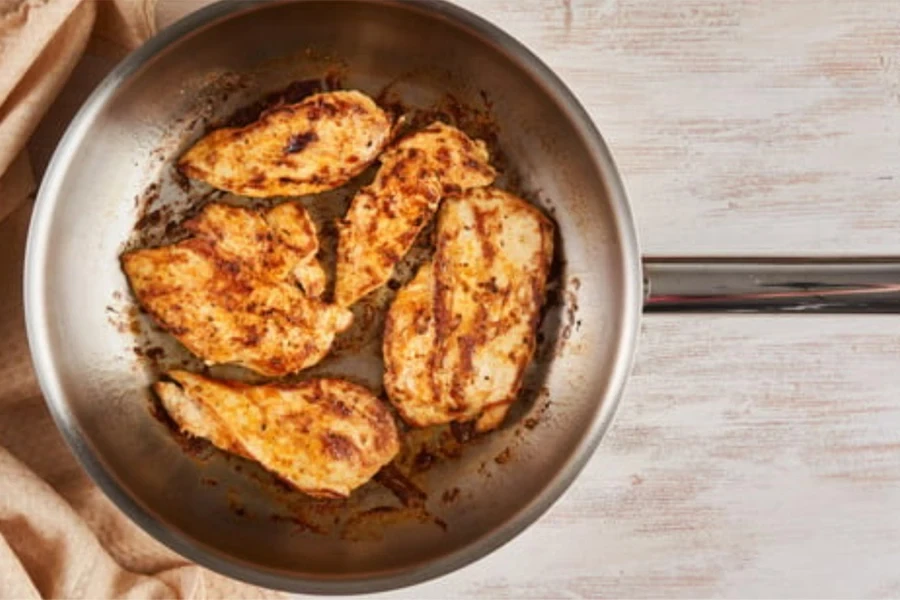
Aluminum saucepans can be a good way to cook food quickly, but they can easily become dented or burn foods if not used correctly. Nevertheless, aluminum saucepans are lightweight and dishwasher safe, making them the go-to for consumers looking for an easy maintenance option.
Ceramics
Ceramic saucepans are usually thicker, making them capable of enduring high-heat cooking. For this reason, they are perfect for searing foods. However, ceramic saucepans are not metal utensil-friendly, so wooden or silicone utensils should only be used with them to avoid damaging the pan’s surface.
Hard-anodized aluminum
These saucepans eliminate the weaknesses of regular aluminum variants, making them perfect for consumers who prefer cooking on medium to high heat. Hard-anodized aluminum pans also have even heat distribution and heat quickly, allowing consumers to cook their perfect foods faster and easier.
Finishes
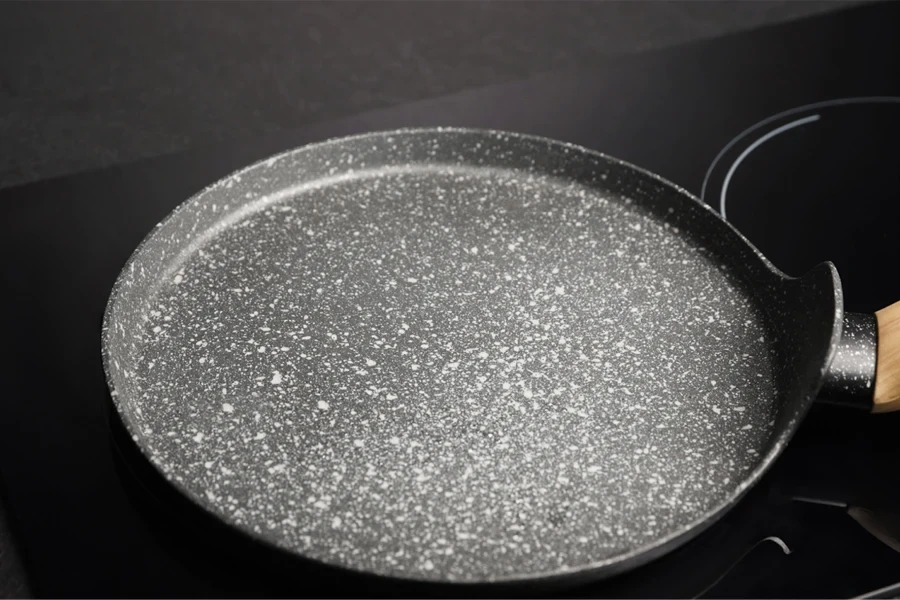
There are also two main saucepan finishes – nonstick and enameled – which we will take a closer look at below:
Nonstick
These saucepans have light coatings that help prevent food from sticking to their surfaces. For this reason, nonstick saucepans are the easiest to use and clean after cooking. Additionally, nonstick saucepans appeal more to health-conscious consumers and those who want to use less oil when cooking.
Enameled
Meanwhile, enamel saucepans use a porcelain coat over a cast iron or steel base to create a smooth surface, giving them a durable, scratch-resistant surface.
Stove-top compatibility
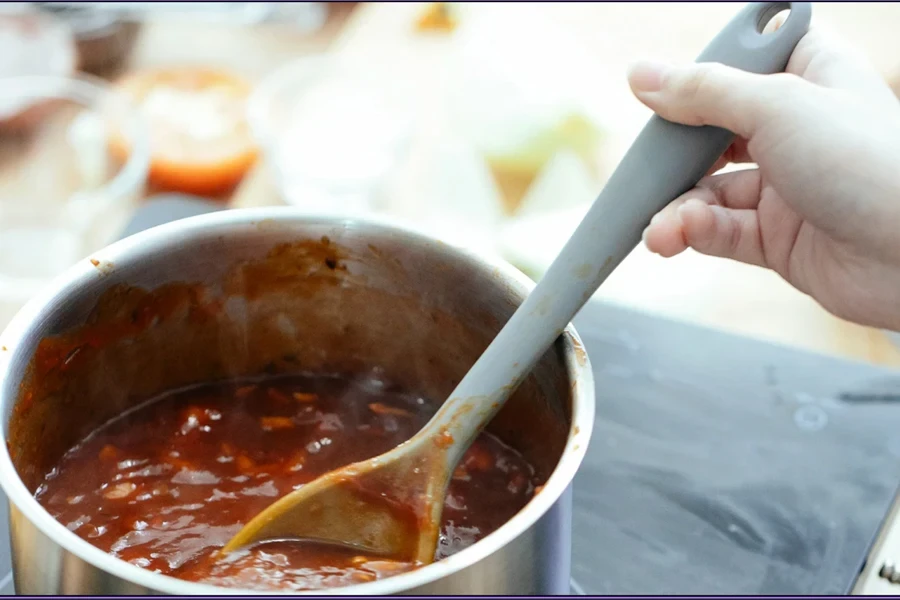
The type of stove consumers have will also determine the kind of saucepan they’ll want as what works for one stove top may not work for the other, for example:
Electric coil cooktop
These stove tops tend to heat up slower, so users will want similarly slow-heating pan, like those made from stainless steel, aluminum, and cast iron.
Electric smooth top
Usually, electric smooth-top stoves use glass or ceramic to give them a smooth look. Because these smooth surfaces are fragile, they suit lighter, stainless steel saucepans.
Gas
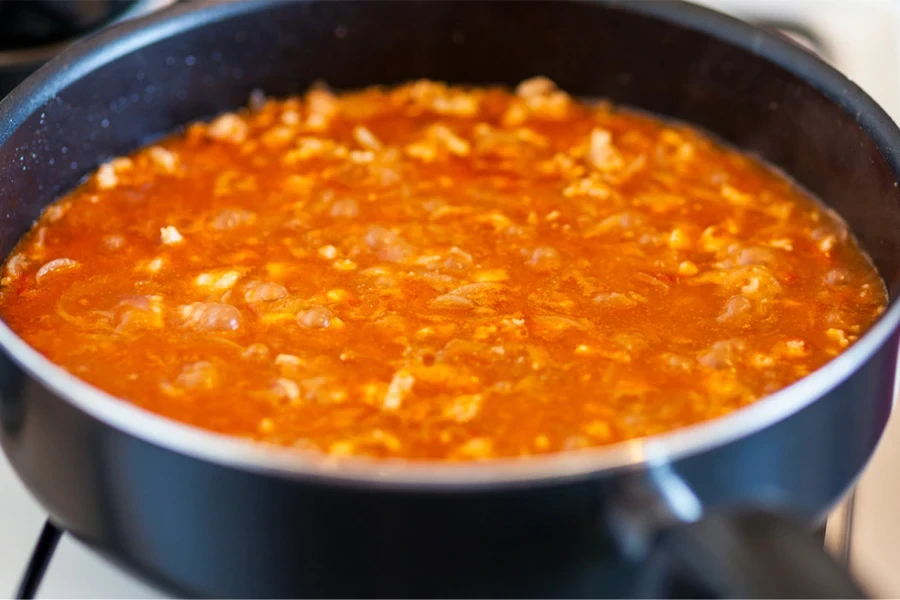
Gas stovetops heat up quickly, so consumers must avoid using pans that can’t handle such fast-acting temperatures. The ideal choices here then are saucepans made of copper, stainless steel, or hard-anodized variants that heat up quickly without visible damage.
Induction
These stovetops are a better fit for saucepans with magnetic bases, like cast iron or stainless steel. Some copper and aluminum saucepans also have magnetic metals that are compatible with stovetops. However, sellers must check the manufacturers’ specifications to determine whether their pans are bonded with magnetic metal.
Capacity
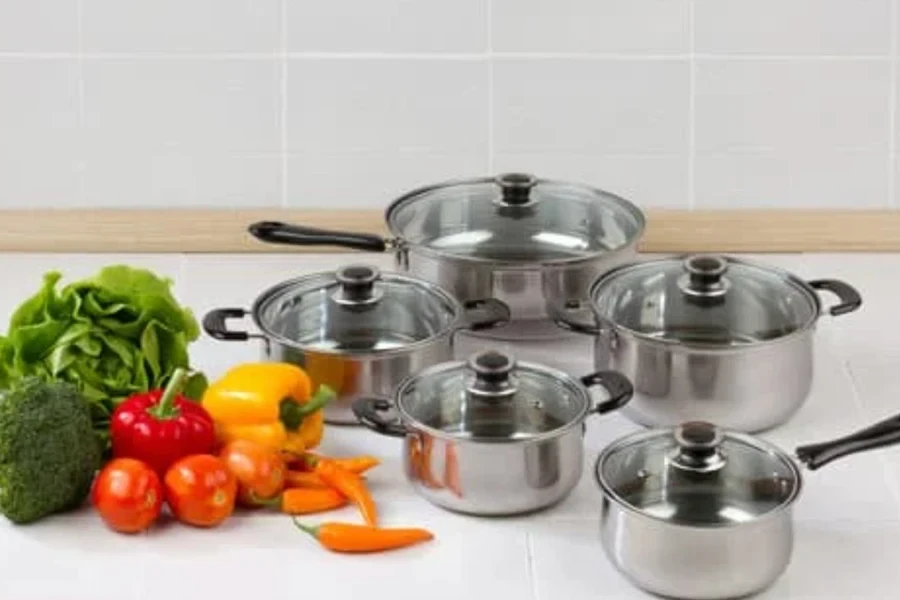
Saucepans have different sizes, determining what they’re best used for. See the table below for more information on saucepan sizing.
| Saucepan size (quarts) | Ideal use |
| Under 2 | Perfect for consumers who frequently cook small quantities or need something to warm sauces and butter, etc. |
| 2-4 | Suitable for families and cookingpasta, sauces, or heating soup, etc. |
| 4-6 | Good for large dinners and batches of food |
Features

Look for saucepans that have PTFE-free and PFOA-free labels, signalling that won’t let off potentially hazardous fumes when used. Lids are also necessary for certain foods in order to maintain moisture, such as when cooking rice.
Another feature are cool-touch handles, protecting the user’s hands. Sellers can also opt for saucepans with pour spouts to help consumers easily remove liquid contents without spillages.
Conclusion
Saucepans are a hugely versatile piece of kitchen kit, handling almost any stove-top task that is thrown at them. In addition to their versatility, saucepans are also in high demand, with Google data showing that 246,000 people searched for them in March 2024 alone.
Use this guide to find the perfect saucepan for your customers, and don’t forget to subscribe Alibaba.com Read’s home and garden section to stay up to date with other trending products.



